
The Military William Order, or often named Military Order of William, is the oldest and highest honour of the Kingdom of the Netherlands. It is named after St. William of Gellone (755–814), the first Prince of Orange. Its motto is Voor Moed, Beleid en Trouw. The chivalric order was established on 30 April 1815 by King William I and was presented for feats of excellent bravery on the battlefield and as a meritorious decoration to senior military officers. Comparable with the French Légion d’Honneur but far less often awarded, it is open to everyone regardless of rank or nobility—not only to Dutch military, but also to foreigners. To date, membership in the Order is extremely rarely awarded, and only for exceptional bravery in battle.

The Royal Netherlands Army is the land branch of the Netherlands Armed Forces. Though the Royal Netherlands Army was raised on 9 January 1814, its origins date back to 1572, when the Staatse Leger was raised making the Dutch standing army one of the oldest in the world. It fought in the Napoleonic Wars, World War II, the Indonesian War of Independence and the Korean War, as well as served with NATO on the Cold War frontiers in West Germany from the 1950s to the 1990s.
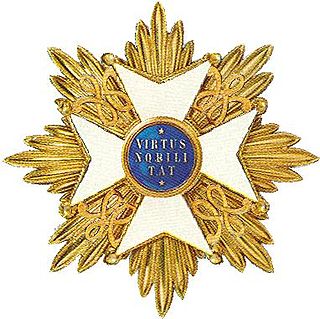
In the Dutch honours system, most orders are the responsibility of ministers of the Netherlands Government. The house orders, however, are awarded at the discretion of the Dutch monarch alone.

Prince Carl Bernhard of Saxe-Weimar-Eisenach was a distinguished soldier, who, in 1815, after the congress of Vienna, became colonel of a regiment in the service of the king of the Netherlands. He fought at the Battle of Quatre Bras and the Battle of Waterloo where he commanded the 2nd Brigade of the 2nd Dutch Division, and later became a Chief Commander of the Royal Netherlands East Indies Army.

General Simon Hendrik Spoor was the Chief of Staff of the Royal Netherlands East Indies Army and the Royal Dutch Army in the Dutch East Indies, from 1946 to 1949, during the Indonesian National Revolution.

The Government Navy was a Dutch naval force in the former Dutch East Indies and Dutch New Guinea between 1861 and 1962. It succeeded the Civil Colonial Navy of 1815 and existed alongside the Indies Military Navy until 1930, when the latter was disbanded and the Government Navy was militarized between 1939 and 1941.

Albert Eduard Stoové was a sergeant in the Royal Netherlands East Indies Army Air Force at the start of World War II. For several actions with the 2-VLG-V squadron under command of Captain Jacob Pieter van Helsdingen he received the Vliegerkruis on 24 February 1942.

The Cross for the Four Day Marches is an official Dutch decoration awarded for successful participation in the International Four Days Marches held annually at Nijmegen, The Netherlands. The full title of the decoration is Kruis Voor Betoonde Marsvaardigheid. It is more commonly referred to as the Vierdaagse Cross or Vierdaagsekruis.
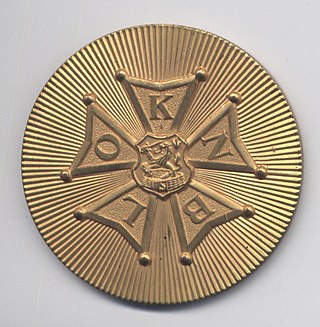
The Group Medal of the Four Day Marches is a non wearable bronze presentation medal awarded to each registered group who successfully completes all four days of the International Four Days Marches Nijmegen held annually at Nijmegen, Netherlands.
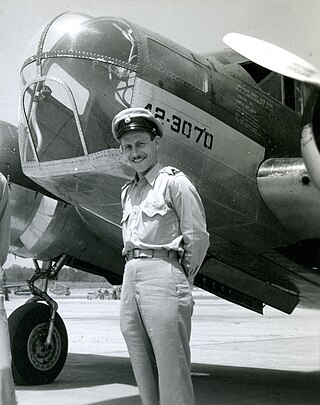
Lt. Colonel Jhr. Bodo Sandberg was a fighter pilot in the Royal Netherlands Air Force and 'Engelandvaarder' during World War II. He was awarded the Cross of Merit and the Airman's Cross for his bravery during the German invasion of May 1940.
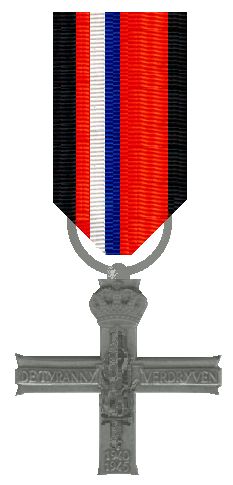
The Resistance Memorial Cross or Resistance Commemorative Cross is a medal awarded in the Netherlands to members of the Dutch resistance during the Second World War.
The Expedition Cross officially known as the Cross for Important Military Operations was a military decoration of Kingdom of the Netherlands. Created by royal decree on 19 February 1869, by King William III, the cross was awarded for participation in major military operations between 1846 and 1942.
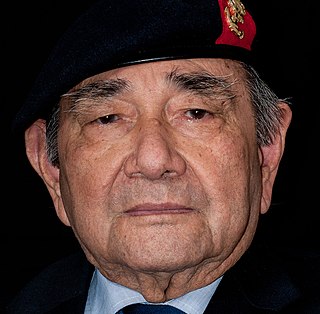
Giovanni Narcissus Hakkenberg was a Dutch marine of Indonesian and European descent, and decorated war hero and knight of the Military Order of William. The Military William Order is the highest honour in the Netherlands, bestowed for "performing excellent acts of Bravery, Leadership and Loyalty in battle".

The Korps Commandotroepen (KCT) is the elite special forces unit of the Royal Netherlands Army. The KCT traces its origins to the Second World War with the founding of No. 2 (Dutch) Troop, and the founding of the Korps Speciale Troepen during the Indonesian War of Independence. At present, the unit is tasked with conducting the full spectrum of special operations, its principal tasks being direct action, special reconnaissance, military assistance and counter-terrorism.

Tette "Ted" Meines was a lieutenant general in the Royal Netherlands Army and an activist for veterans' rights. During World War II, he was a member of the Dutch resistance and helped Jewish families, for which he was awarded the title Righteous Among the Nations by Israel. After the war had ended, Meines saw active service in the Politionele acties. During and after his military career, he became involved in veteran affairs and was instrumental in the setting up of several veterans organizations. He is considered the founder of the Dutch veteran affairs policy.

Frits Jan Willem den Ouden was a Dutch bomber pilot during World War II. He flew missions for the Royal Netherlands East Indies Army Air Force from 1936 to 1950, working his way up to the rank of captain.
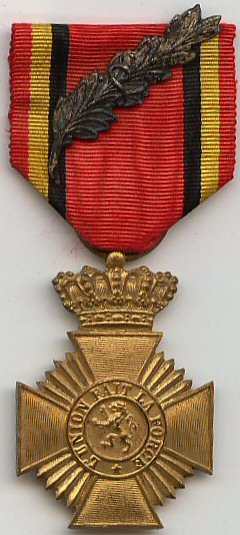
The Military Decoration for Exceptional Service or Acts of Courage or Devotion is awarded to personnel of the Belgian Armed Forces for either displayed herorism or for display of extraordinary devotion to duty. In history, sometimes it is referred to as an 'Article 4' award, as originally, the medal was created as a variation of the military decoration for long service. However, nowadays, both medals are distinct awards, albeit still having the same guilt cross.

Ida Laura Veldhuyzen van Zanten was a Dutch pilot and social worker who was a member of the Dutch resistance during the Second World War and a pilot in the British Air Transport Auxiliary. She was the only woman to receive the Vliegerkruis, the Airman's Cross.
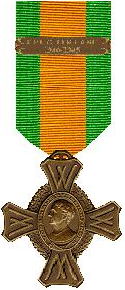
The War Commemorative Cross is a military award of the Netherlands. The medal was established to commemorate service to the Kingdom of the Netherlands during World War II. The medal was established on 16 March 1944 by royal decree of Queen Wilhelmina.
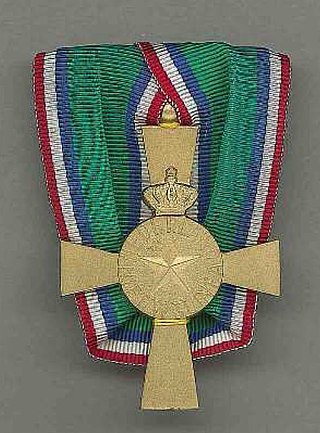
The New Guinea Commemorative Cross is a military award of the Netherlands. The New Guinea Commemorative Cross was instituted by Queen Juliana by Royal Decree on 29 September 1962. The medal was awarded to members of the Netherlands Armed Forces the Royal Netherlands East Indies Army, to recognize at least three months of service in Dutch New Guinea and adjacent waters between 28 December 1949 and 23 November 1962. Recipients who were engaged in hostile military action during the Indonesian campaign of infiltration were awarded a clasp with the year 1962.



















